Abstract
Monoclonal antibodies (MoAbs) produced against determinants A and B of the human ABO blood group system and against the Lea and Leb determinants of the Lewis (Le) blood group system detected these determinants on molecules released by cultured cells of human colorectal, gastric and/or pancreatic carcinoma (Ca) but not by a variety of other cells maintained in culture. Circulating Le antigen could be demonstrated in sera of patients by inhibiting the binding of MoAbs to a target preparation. A double determinant radioimmunoassay (DDIA) was then developed to detect the association of blood group determinants with a previously defined gastrointestinal cancer antigen (GICA). The DDIA with the anti-blood group and anti-GICA antibody was in some cases more sensitive in detecting GICA in sera than using the anti-GICA MoAb alone. Of 55 sera from patients with primary and early recurrent colorectal carcinoma (CRC), 10 (18%) were scored positive in the DDIA using only anti-GICA MoAb. When MoAb binding to a determinant on Leb and on H, type I, was used as first antibody in DDIA followed by anti-GICA MoAb 11 additional sera were reactive, increasing the percentage of positive sera to 38. Using the same combinations of MoAbs, the sensitivity of detection of GICA was only slightly improved from 63 to 66% in sera of patients with advanced CRC. The number of false positive sera from patients with non-malignant gastrointestinal diseases or from healthy donors remained at low levels when anti-blood group determinant antibodies were used together with anti-GICA MoAb. The results indicate that DDIAs with MoAbs against different blood group determinants and tumour associated antigens can improve the detection of circulating antigens in patients with early stage cancer.
Full text
PDF

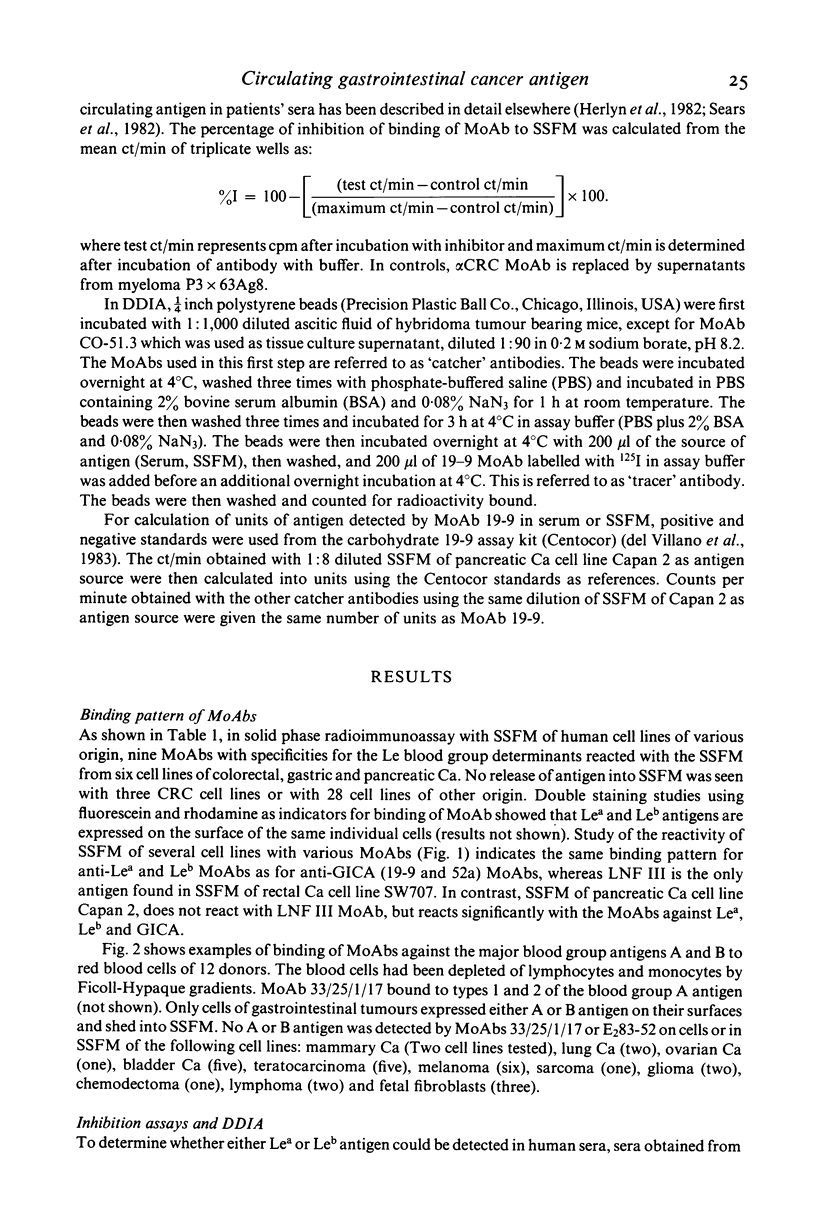
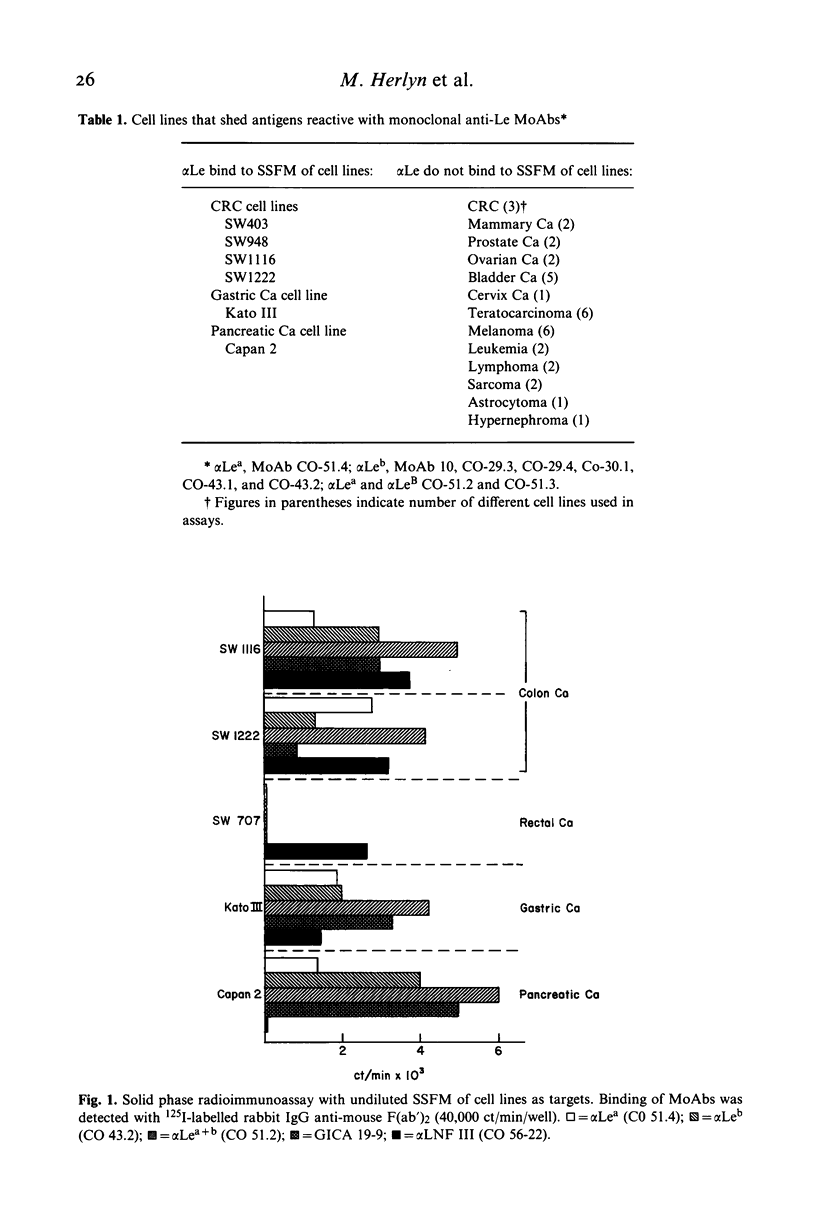
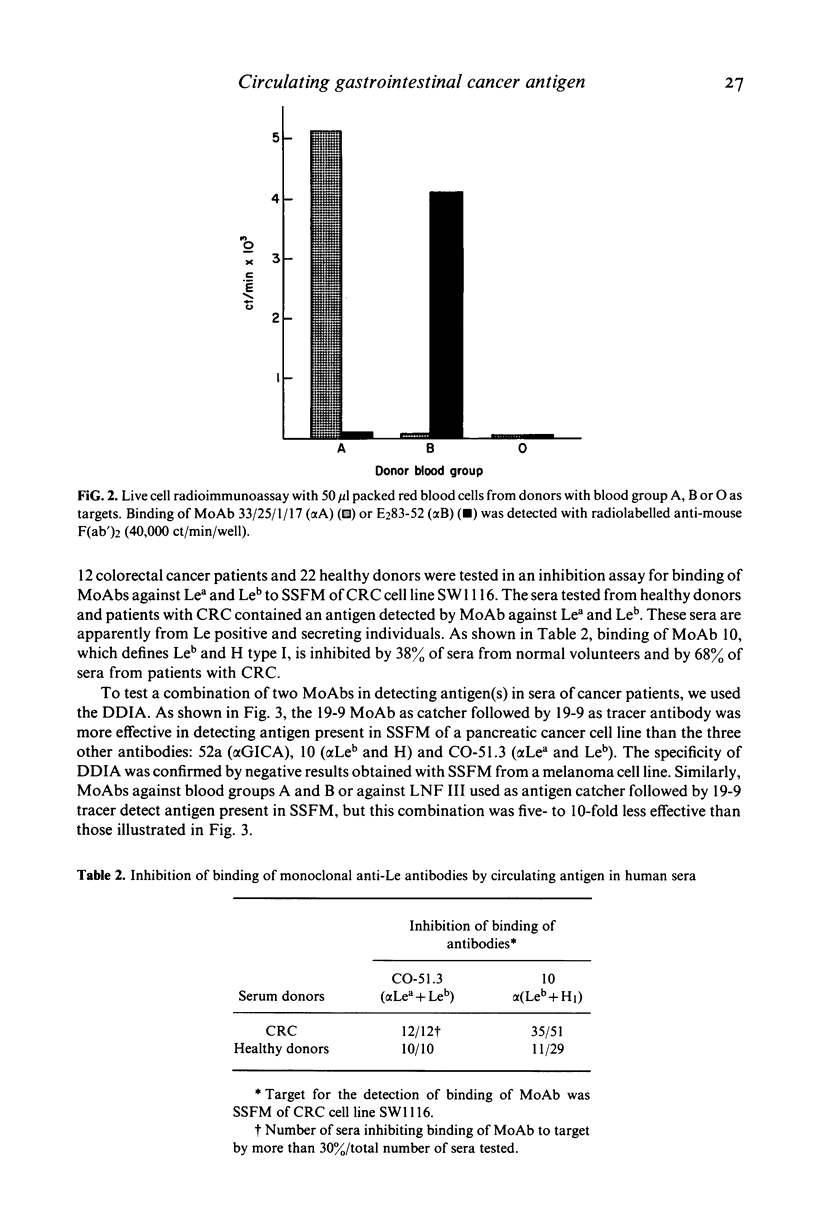



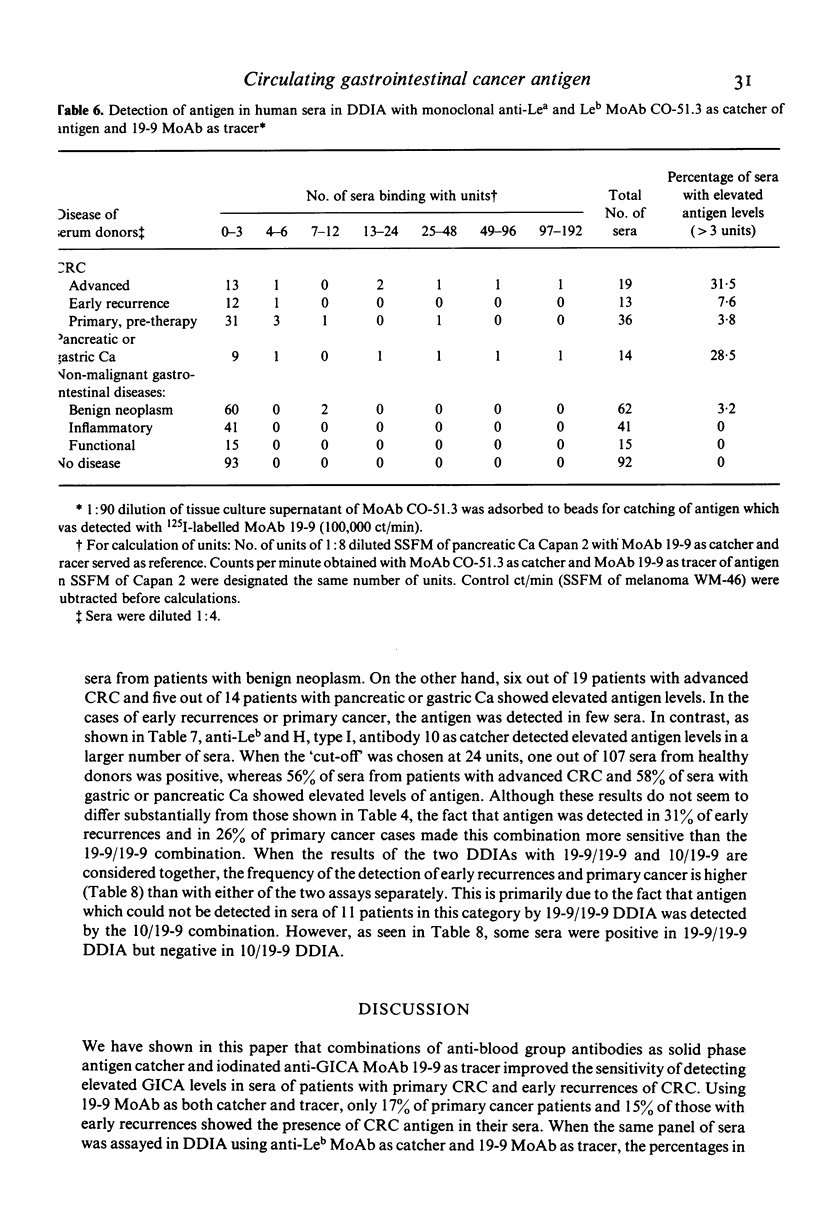
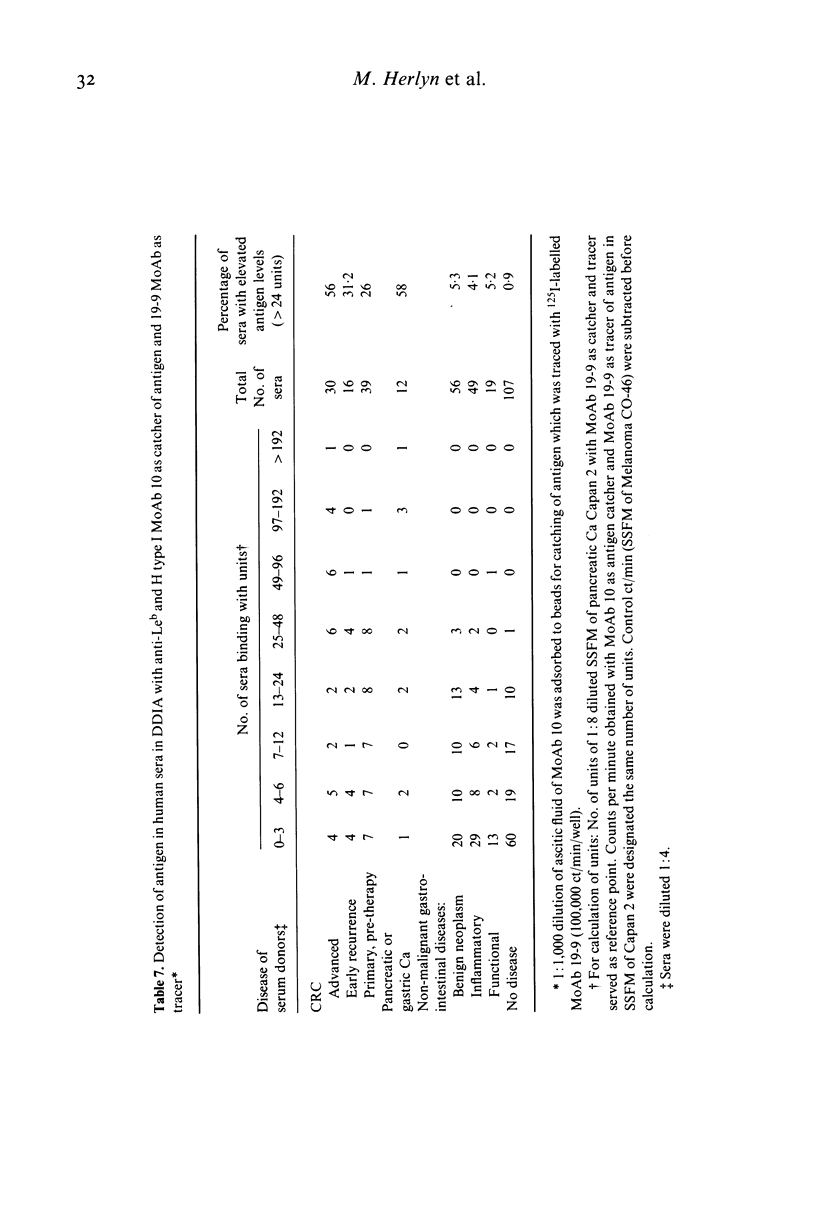


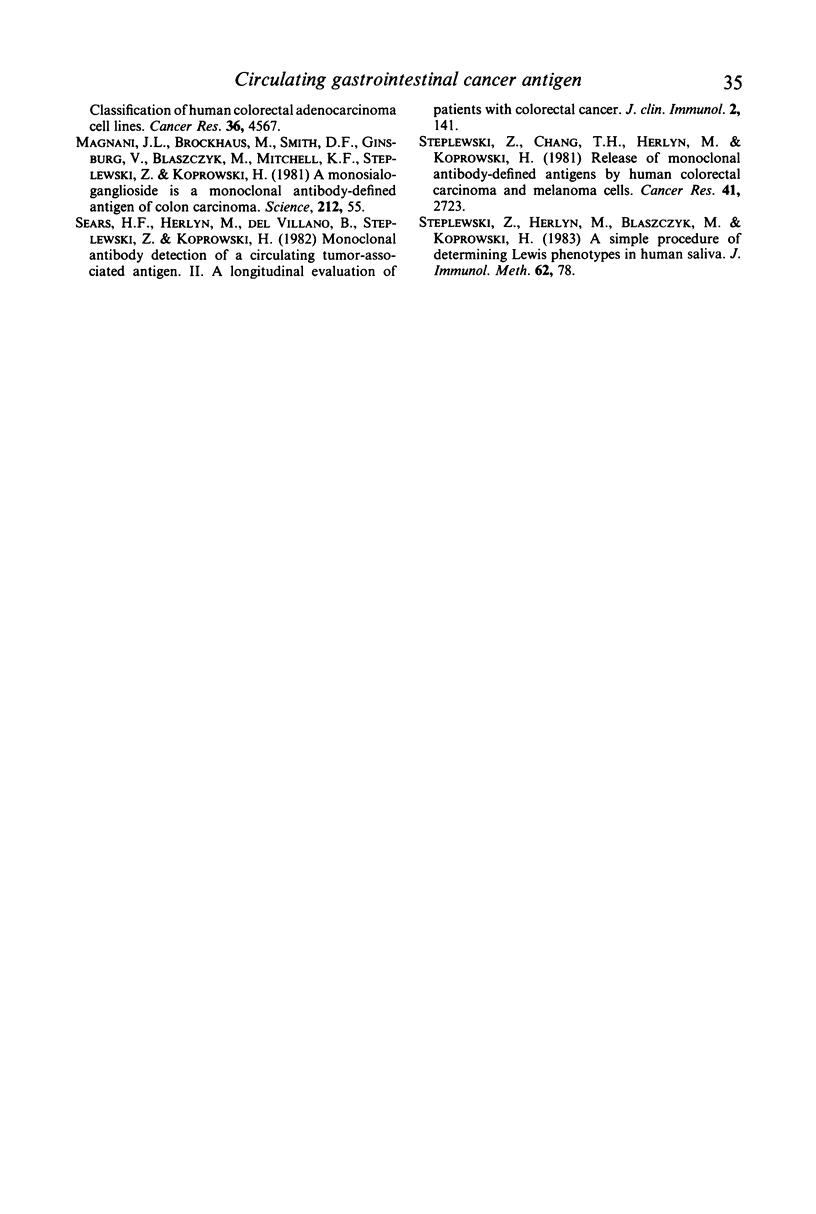
Selected References
These references are in PubMed. This may not be the complete list of references from this article.
- Atkinson B. F., Ernst C. S., Herlyn M., Steplewski Z., Sears H. F., Koprowski H. Gastrointestinal cancer-associated antigen in immunoperoxidase assay. Cancer Res. 1982 Nov;42(11):4820–4823. [PubMed] [Google Scholar]
- Brockhaus M., Magnani J. L., Blaszczyk M., Steplewski Z., Koprowski H., Karlsson K. A., Larson G., Ginsburg V. Monoclonal antibodies directed against the human Leb blood group antigen. J Biol Chem. 1981 Dec 25;256(24):13223–13225. [PubMed] [Google Scholar]
- Brockhaus M., Magnani J. L., Herlyn M., Blaszczyk M., Steplewski Z., Koprowski H., Ginsburg V. Monoclonal antibodies directed against the sugar sequence of lacto-N-fucopentaose III are obtained from mice immunized with human tumors. Arch Biochem Biophys. 1982 Sep;217(2):647–651. doi: 10.1016/0003-9861(82)90546-x. [DOI] [PubMed] [Google Scholar]
- Del Villano B. C., Brennan S., Brock P., Bucher C., Liu V., McClure M., Rake B., Space S., Westrick B., Schoemaker H. Radioimmunometric assay for a monoclonal antibody-defined tumor marker, CA 19-9. Clin Chem. 1983 Mar;29(3):549–552. [PubMed] [Google Scholar]
- Hansson G. C., Karlsson K. A., Larson G., McKibbin J. M., Blaszczyk M., Herlyn M., Steplewski Z., Koprowski H. Mouse monoclonal antibodies against human cancer cell lines with specificities for blood group and related antigens. Characterization by antibody binding to glycosphingolipids in a chromatogram binding assay. J Biol Chem. 1983 Apr 10;258(7):4091–4097. [PubMed] [Google Scholar]
- Herlyn D., Powe J., Alavi A., Mattis J. A., Herlyn M., Ernst C., Vaum R., Koprowski H. Radioimmunodetection of human tumor xenografts by monoclonal antibodies. Cancer Res. 1983 Jun;43(6):2731–2735. [PubMed] [Google Scholar]
- Herlyn M., Sears H. F., Steplewski Z., Koprowski H. Monoclonal antibody detection of a circulating tumor-associated antigen. I. Presence of antigen in sera of patients with colorectal, gastric, and pancreatic carcinoma. J Clin Immunol. 1982 Apr;2(2):135–140. doi: 10.1007/BF00916897. [DOI] [PubMed] [Google Scholar]
- Herlyn M., Steplewski Z., Herlyn D., Koprowski H. Colorectal carcinoma-specific antigen: detection by means of monoclonal antibodies. Proc Natl Acad Sci U S A. 1979 Mar;76(3):1438–1442. doi: 10.1073/pnas.76.3.1438. [DOI] [PMC free article] [PubMed] [Google Scholar]
- Koprowski H., Herlyn M., Steplewski Z., Sears H. F. Specific antigen in serum of patients with colon carcinoma. Science. 1981 Apr 3;212(4490):53–55. doi: 10.1126/science.6163212. [DOI] [PubMed] [Google Scholar]
- Koprowski H., Steplewski Z., Mitchell K., Herlyn M., Herlyn D., Fuhrer P. Colorectal carcinoma antigens detected by hybridoma antibodies. Somatic Cell Genet. 1979 Nov;5(6):957–971. doi: 10.1007/BF01542654. [DOI] [PubMed] [Google Scholar]
- Magnani J. L., Brockhaus M., Smith D. F., Ginsburg V., Blaszczyk M., Mitchell K. F., Steplewski Z., Koprowski H. A monosialoganglioside is a monoclonal antibody-defined antigen of colon carcinoma. Science. 1981 Apr 3;212(4490):55–56. doi: 10.1126/science.7209516. [DOI] [PubMed] [Google Scholar]
- Sears H. F., Herlyn M., Del Villano B., Steplewski Z., Koprowski H. Monoclonal antibody detection of a circulating tumor-associated antigen. II. A longitudinal evaluation of patients with colorectal cancer. J Clin Immunol. 1982 Apr;2(2):141–149. doi: 10.1007/BF00916898. [DOI] [PubMed] [Google Scholar]
- Steplewski Z., Chang T. H., Herlyn M., Koprowski H. Release of monoclonal antibody-defined antigens by human colorectal carcinoma and melanoma cells. Cancer Res. 1981 Jul;41(7):2723–2727. [PubMed] [Google Scholar]
- Steplewski Z., Herlyn M., Blaszczyk M., Koprowski H. A simple procedure for determining Lewis phenotypes in human saliva. J Immunol Methods. 1983 Aug 12;62(1):73–78. doi: 10.1016/0022-1759(83)90112-6. [DOI] [PubMed] [Google Scholar]


